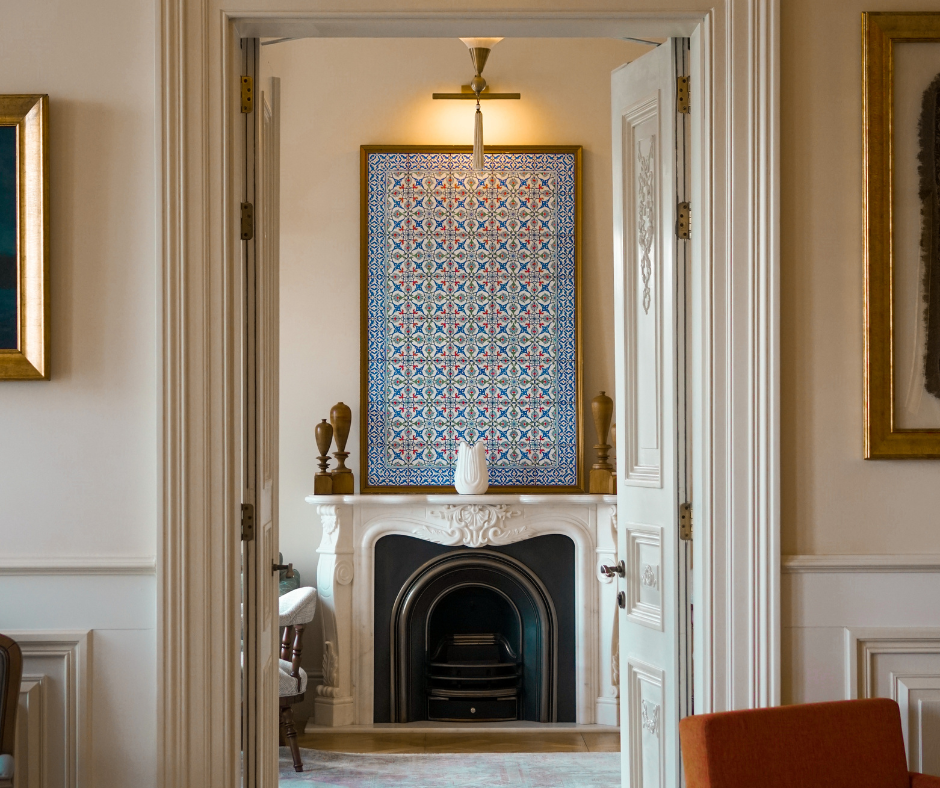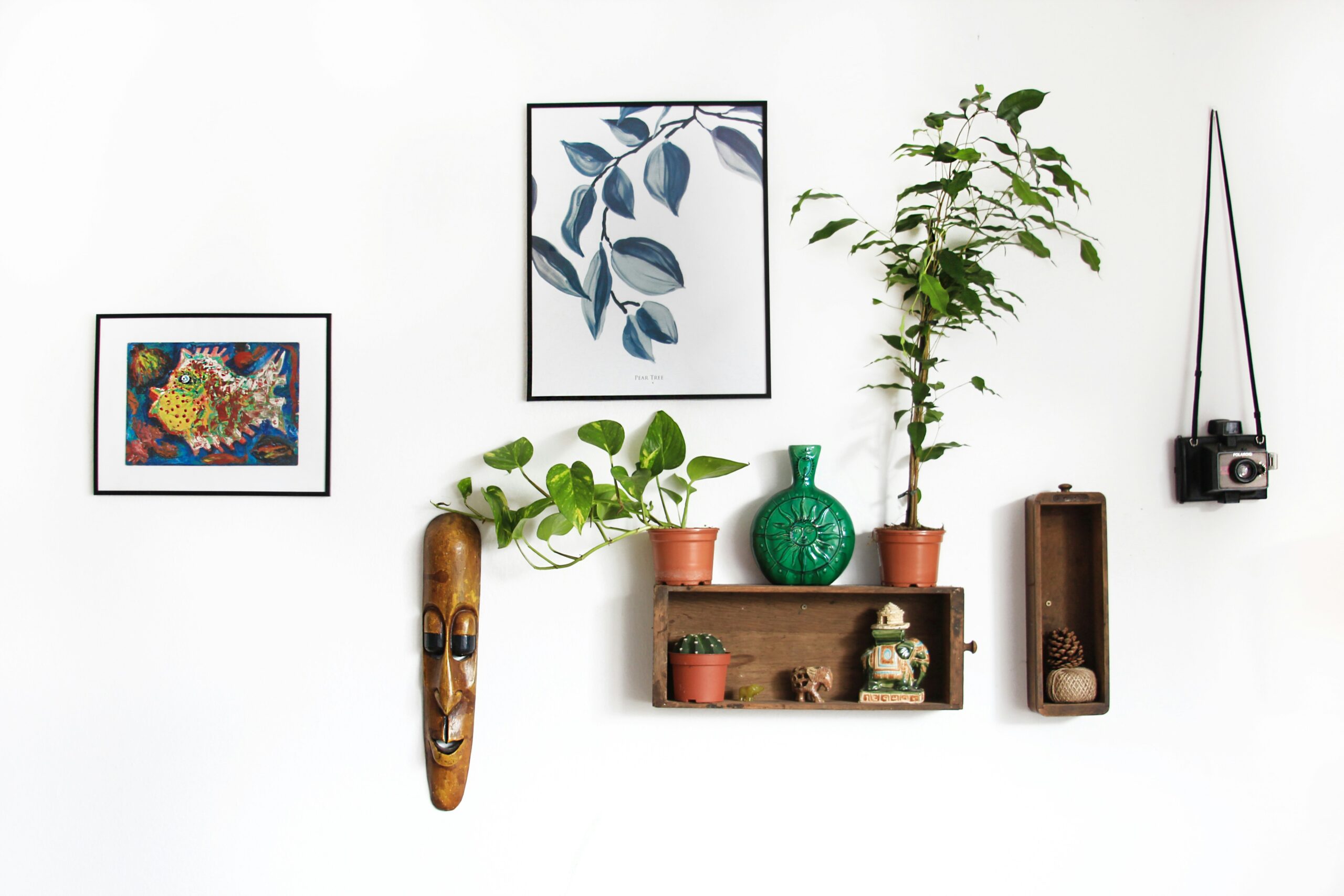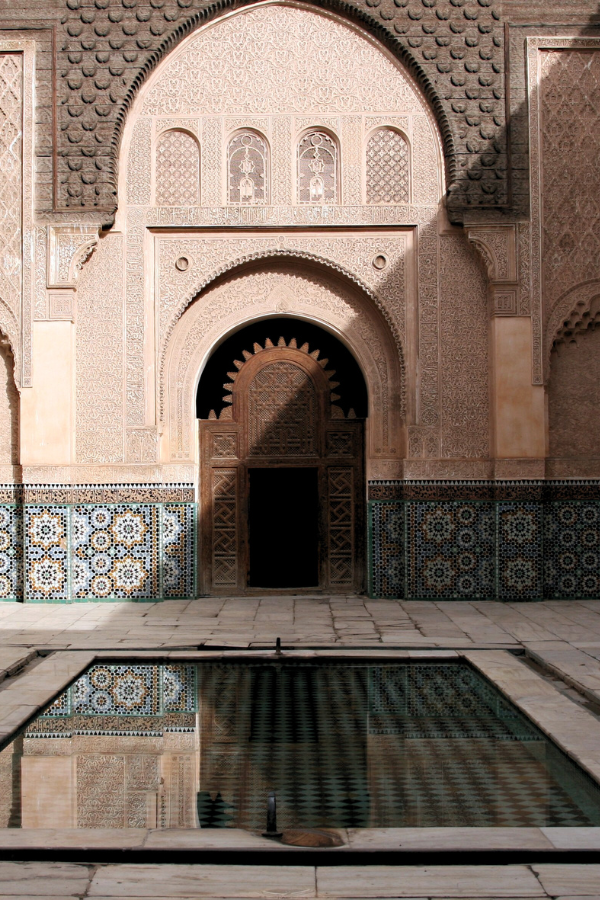
From Andalusia to the Almohad: A History of Moroccan Zellige Tile
Summary
Reflection Questions
Journal Prompt
While you might shop for Zellige tile to adorn your kitchen backsplash, bathroom floor, or shower surround, the creation and installation of these intricate mosaics is actually an ancient practice. Read on to learn all about the history of Zellige tilework—from its Roman origins to Alhambra to the Almohad dynasty and beyond.
The Ancient Origins of Zellige Tiles
The origins of Zellige tiles can be traced back to the Roman era, where the use of mosaic art was widespread across the Roman Empire. The Romans were known for their intricate mosaic floors and walls, composed of small, colored stones and glass pieces of different sizes arranged in elaborate patterns.
These early mosaics set a precedent for the use of geometric designs in decorative art. As the Roman Empire expanded and interacted with different cultures, their mosaic techniques spread across the Mediterranean, laying the groundwork for the future development of Zellige tiles.
Influence of Mosaic Techniques on Early Zellige Tiles
Roman mosaic techniques and artistry significantly influenced the early development of Zellige tiles. The meticulous craftsmanship and geometric precision seen in Roman mosaics were adopted and refined by later cultures. In particular, the use of small, tessellated pieces to create intricate designs became a foundational aspect of Zellige tile work.
These early influences are evident in the geometric patterns and the careful arrangement of tiles that characterize traditional Zellige. As artisans experimented with different materials and techniques, the unique style of Zellige began to emerge, distinguished by its vibrant colors and intricate geometric motifs.
Islamic Golden Age
The Islamic Golden Age, spanning from the 8th to the 14th centuries, was a period of significant cultural and scientific advancements across the Islamic world. During this time, Islamic artistic traditions, including those of mosaic and tile work, flourished.
The principles of Islamic art, which emphasized abstract and geometric designs due to religious prohibitions against depicting living beings, profoundly influenced the development of Zellige tiles. This era saw the rise of elaborate architectural decorations, with Zellige tiles being used extensively in mosques, palaces, and public buildings to create visually stunning and spiritually symbolic spaces.
Migration of Moorish Artisans to Morocco and Their Impact on Local Craftsmanship
The migration of Moorish artisans from Andalusia to Morocco in the 8th century played a crucial role in the evolution of Zellige tiles. These skilled craftsmen brought with them their knowledge of Islamic art and architecture, including the intricate tile-making techniques that had developed in Spain. Their influence led to the integration of Andalusian styles with local Moroccan traditions, resulting in a unique and sophisticated form of tile work.
This cross-cultural exchange enriched Moroccan craftsmanship, leading to the creation of the distinctive Zellige tiles that are renowned for their complexity and beauty. The impact of these artisans is still evident today in the vibrant, geometric patterns that adorn many historic and contemporary Moroccan buildings and public spaces.
The Introduction of Zellige Tilework to Morocco
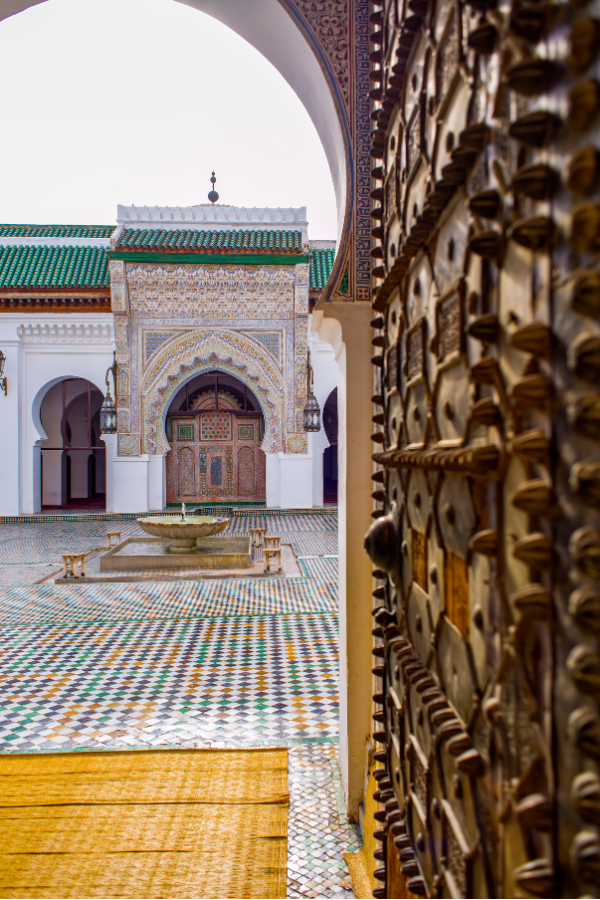
The introduction of Zellige tiles to Morocco occurred during the 8th century, coinciding with the spread of Islam and the migration of the Moors from Andalusia to North Africa. This migration was prompted by the Umayyad conquest of Hispania, which led to a cultural and artistic exchange between Andalusia and Morocco.
The Moors brought with them a rich heritage of Islamic art and architecture, including the intricate tile-making techniques that had flourished in Spain. These techniques found a new home in Morocco, where they were embraced and further developed by local artisans. The fusion of Andalusian and Moroccan styles created a unique and vibrant form of glazed Zellige tilework that became a defining feature of Moroccan art and architecture.
Early Adoption
The initial use and adaptation of Zellige tiles in Moroccan architecture marked a significant evolution in the country’s artistic landscape. Moroccan artisans quickly adopted the new techniques and began incorporating Zellige tiles into various architectural elements. Early examples of Zellige tilework can be seen in the walls, floors, and fountains of mosques, palaces, and private residences.
The tiles were used not only for their aesthetic appeal but also for their durability and practicality in the harsh Moroccan climate. Over time, the artisans developed their own distinctive styles and patterns, blending the influences of their Andalusian predecessors with indigenous Moroccan motifs. This early adoption laid the foundation for the rich tradition of Zellige tilework that continues to be a hallmark of Moroccan architecture.
Al-Qarawiyyin Mosque (Fes)
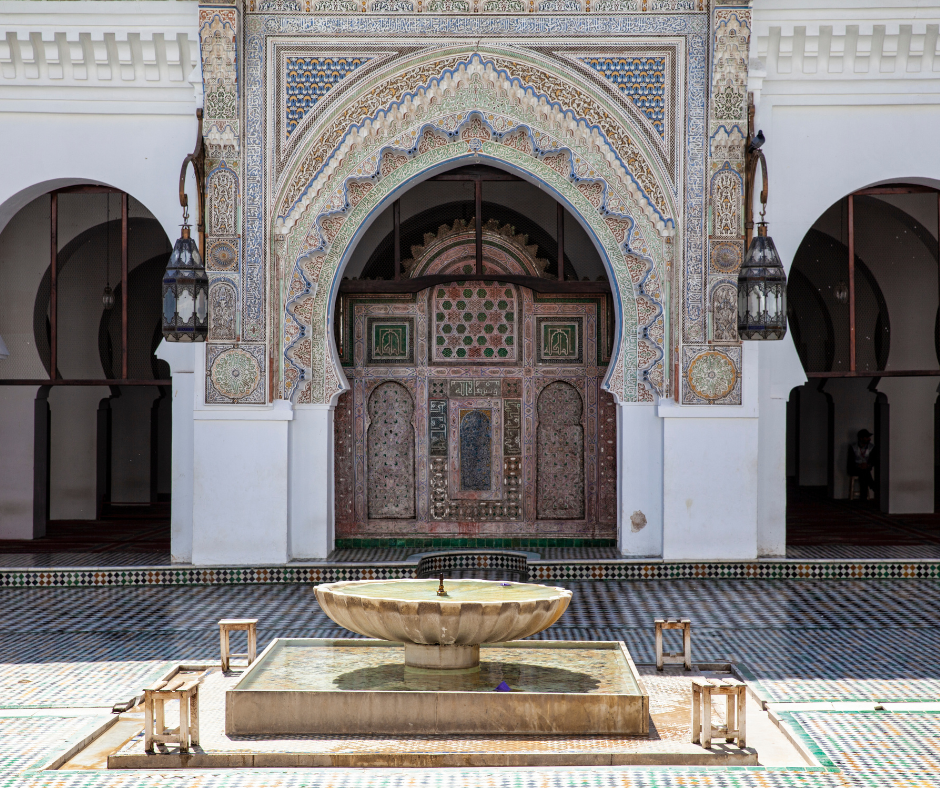
One of the earliest examples of Zellige tilework in Morocco can be found in the Al-Qarawiyyin Mosque in Fes, which was founded in 859 AD and significantly expanded in the 12th century. This mosque is renowned for its intricate Zellige mosaics that adorn the walls, columns, and floors. The geometric patterns and vibrant colors of the tiles reflect the sophisticated craftsmanship and the influence of Islamic art during the early adoption of Zellige in Moroccan architecture.
Tinmal Mosque (High Atlas Mountains)
Constructed in 1156, the Tinmal Mosque is a significant Almohad architectural site that features early examples of Zellige tilework. Although much of the mosque is in ruins today, the remaining Zellige decorations provide insight into the early use of these tiles in Moroccan religious architecture. The intricate geometric patterns and careful arrangement of tiles in the Tinmal Mosque are indicative of the sophisticated craftsmanship of the period.
Kasbah of the Udayas (Rabat)

The Kasbah of the Udayas, built in the 12th century during the reign of the Almohad dynasty, is another early example of Zellige tilework. This fortress complex in Rabat showcases Zellige tiles in various parts of its structure, including its walls and gates. The use of Zellige in the Kasbah reflects the early adoption of this art form in Moroccan military and residential architecture, blending decorative beauty with functional design.
Development During the 12th Century
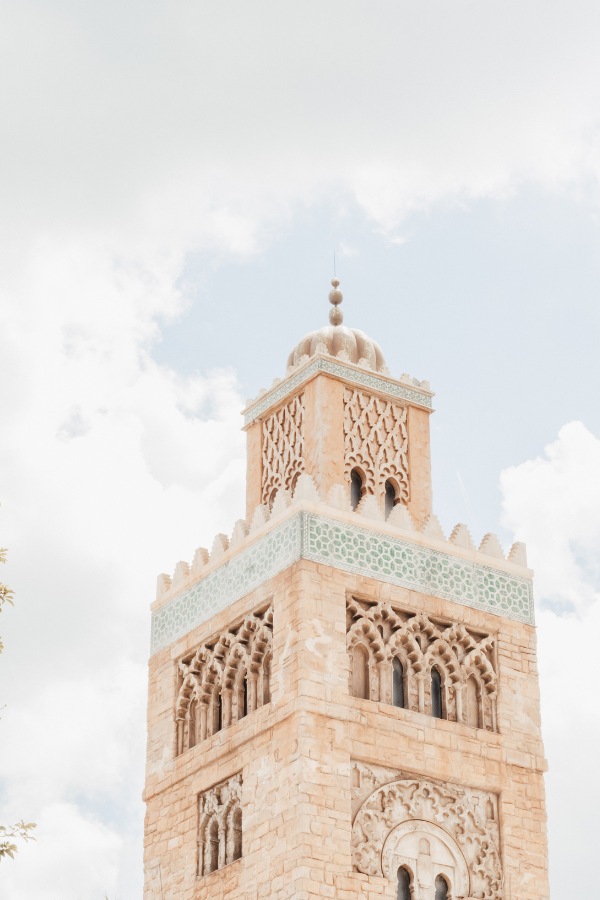
The 12th century was a pivotal period for the development of Zellige tiles, marked by the influential patronage of the Almoravid and Almohad dynasties. These dynasties were known for their strong support of the arts and architecture, which significantly contributed to the flourishing of Zellige craftsmanship. The Almoravid rulers, who were the first to establish Marrakech as a capital, initiated major architectural projects that prominently featured Zellige tiles.
Fuel your creative fire & be a part of a supportive community that values how you love to live.
subscribe to our newsletter
*please check your Spam folder for the latest DesignDash Magazine issue immediately after subscription

The Almohads, who succeeded the Almoravids, continued this tradition and further enhanced the use of Zellige in their grand constructions. This era saw the construction of monumental buildings such as the Koutoubia Mosque in Marrakech and the Hassan Tower in Rabat, where the use of Zellige tiles in decorative schemes was a testament to their aesthetic and cultural importance.
Refinement of Techniques

During the 12th century, there were significant advancements in the techniques used to create and assemble Zellige tiles, leading to a refinement of the craft. Artisans perfected the process of shaping and firing the clay tiles, improving the durability and finish of the final product. They also developed more precise methods for cutting the tiles into intricate geometric shapes, allowing for more complex and detailed mosaic patterns.
This period saw the evolution of distinctive geometric designs that are emblematic of Zellige tilework, such as stars, polygons, and interlaced forms. The enhanced precision in tile assembly techniques enabled the creation of expansive, seamless mosaics that covered large architectural surfaces, transforming walls, floors, and fountains into vibrant works of art. These advancements solidified Zellige’s role as a key element of Islamic and Moroccan architectural identity.
Craftsmanship and Techniques
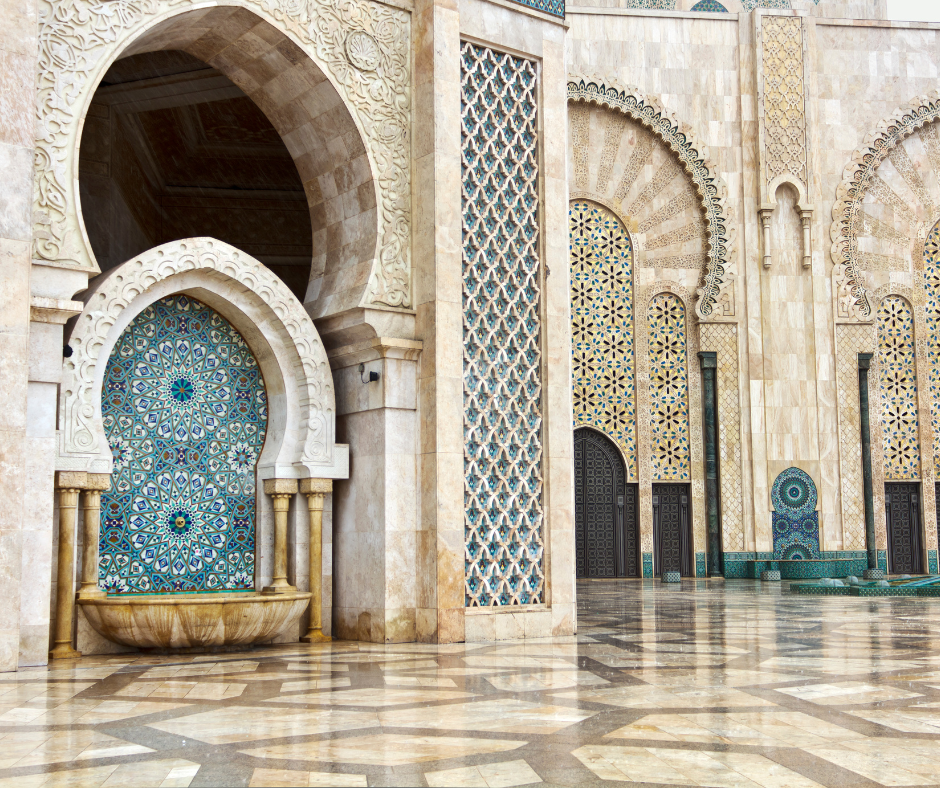
The creation of Zellige tiles involves a meticulous and labor-intensive process that has remained largely unchanged for centuries. The first step is the molding and shaping of clay, which is done by hand to form the basic tile shapes. This clay is sourced from specific regions known for its high quality.
Once shaped, the tiles are left to dry naturally before being fired in kilns at high temperatures. This firing process hardens the tiles and prepares them for the next stage, which involves glazing them with vibrant colors derived from natural pigments.
After glazing, the tiles are fired again to set the colors. The next step is hand-cutting the glazed tiles into small, precise pieces using specialized tools. These pieces are then painstakingly assembled into intricate mosaic patterns, a process that requires significant skill and patience. Each mosaic is carefully crafted to ensure the pieces fit together seamlessly, creating the distinctive geometric designs characteristic of Zellige tiles.
Tools and Materials
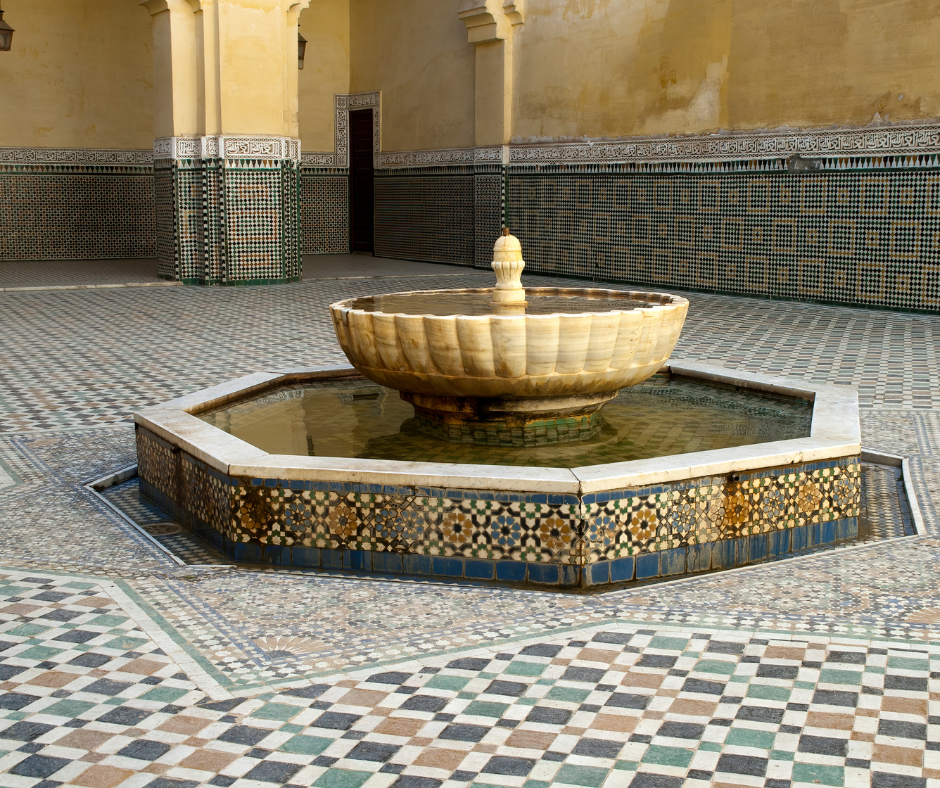
The artisans who create Zellige tiles, known as Maallems, use a variety of traditional tools to achieve their intricate designs. Key tools include the “manqach,” a small hammer used for precise cutting, and the “ferqa,” a special chisel designed for shaping tiles. These tools allow artisans to cut the tiles into the precise shapes needed for complex geometric patterns.
The color palette used in Zellige tilework is traditionally limited to a few vibrant hues: cobalt blue, green, white, black, and red, each made from natural pigments. These colors are applied as glazes before the second firing. The choice of colors and patterns is deeply symbolic, often reflecting elements of nature and Islamic artistic traditions. The use of natural materials and traditional techniques ensures that each Zellige piece is unique, maintaining the authenticity and cultural heritage of this ancient craft
Cultural and Artistic Influence
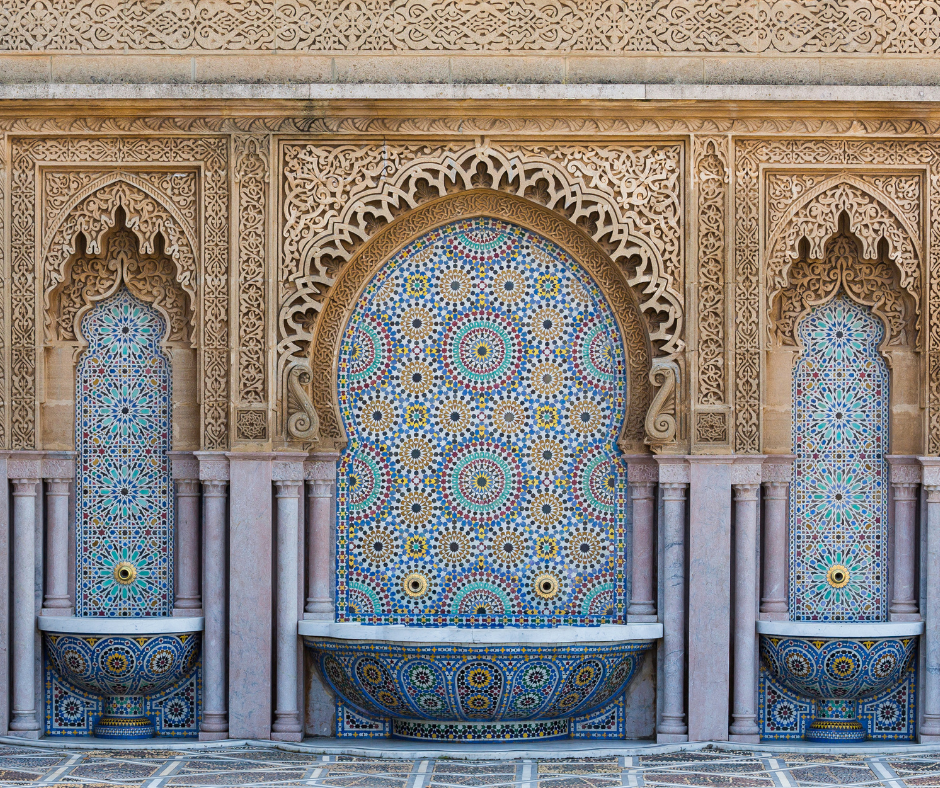
Zellige tiles are deeply rooted in the principles of Islamic art, which heavily influenced their design and usage. One of the core tenets of Islamic art is aniconism, the avoidance of depicting living beings, which led to the prominence of geometric patterns in Zellige tilework. These geometric designs not only adhere to religious guidelines but also symbolize the infinite nature of Allah, representing unity and order within the cosmos.
The intricate patterns are created through the precise arrangement of small, hand-cut tiles, reflecting both mathematical precision and artistic creativity. Additionally, the colors and shapes used in Zellige tiles carry significant symbolism. For instance, blue often represents the sky and spirituality, green signifies nature and life, white symbolizes purity, and black denotes depth and eternity. These symbolic elements combined with geometric patterns create a visually and spiritually resonant form of art that aligns with Islamic aesthetic and religious values.
Architectural Significance
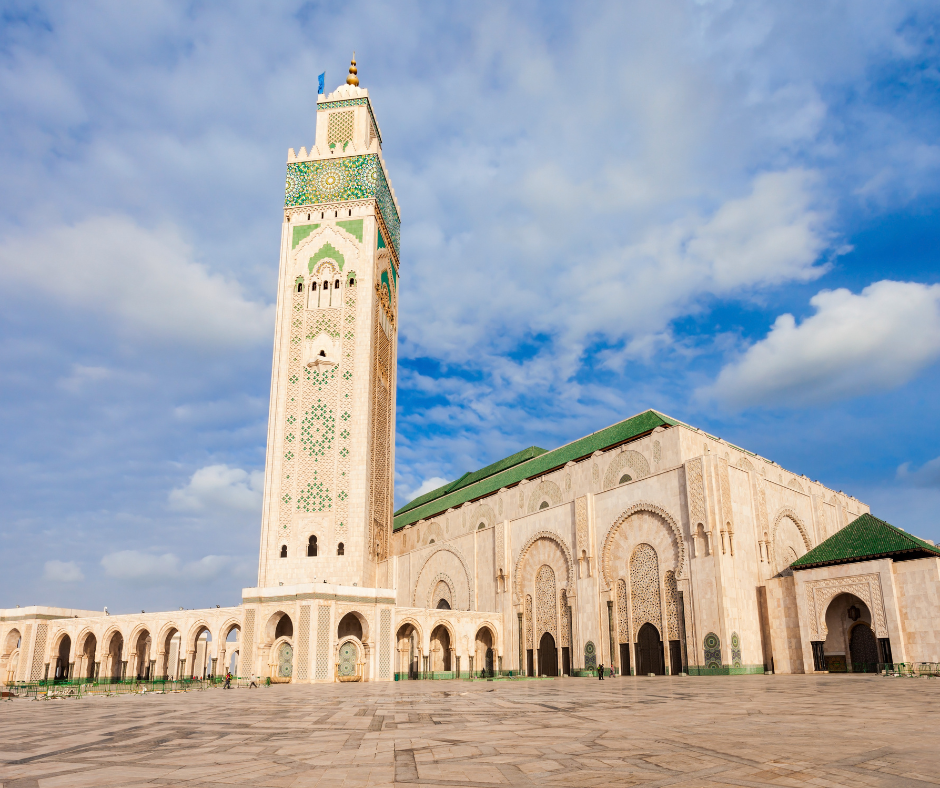
Zellige tiles have been a crucial element in Moroccan architecture, used extensively in mosques, palaces, fountains, and homes. In religious structures, such as mosques, Zellige tiles are used to create intricate mihrabs (prayer niches) and minbars (pulpits), enhancing the spiritual ambiance through their detailed and symbolic designs. Palaces and royal residences feature expansive Zellige mosaics on walls, floors, and courtyards, symbolizing the wealth and power of the patrons.
Public fountains adorned with Zellige tiles not only serve practical purposes but also act as decorative elements that enhance the aesthetic appeal of communal spaces. In private homes, Zellige tiles are often found in courtyards, kitchens, and bathrooms, adding a touch of elegance and cultural heritage. The use of Zellige in various architectural contexts showcases its versatility and enduring appeal as a key component of Moroccan design.
Notable Examples
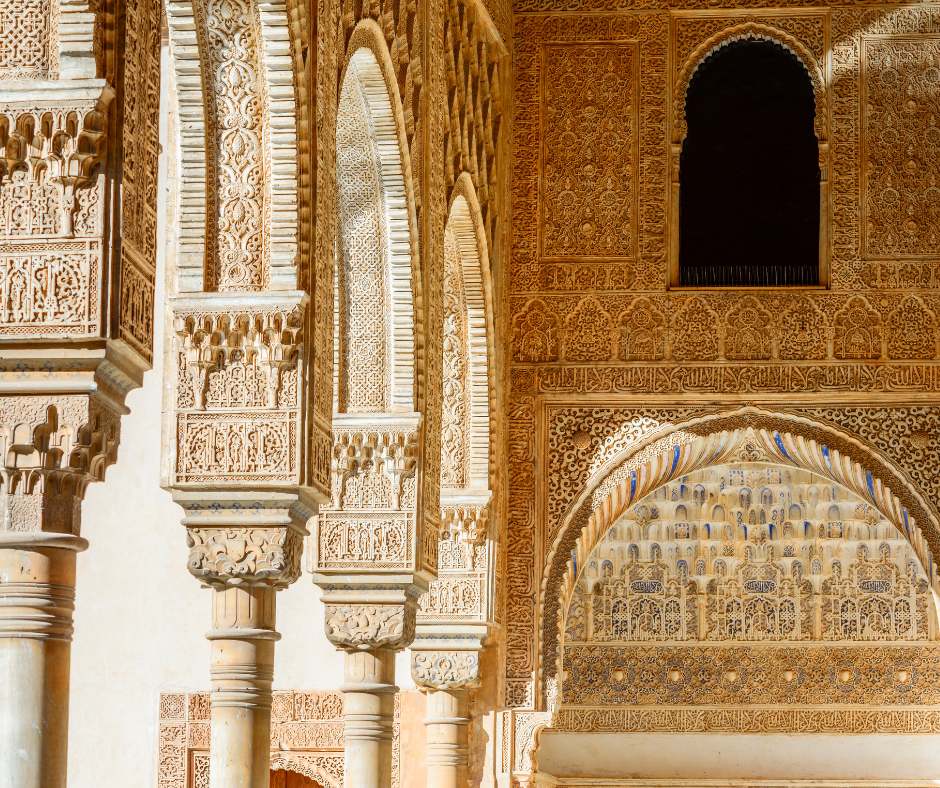
One of the most famous examples of Zellige tilework is found in the Alhambra in Granada, Spain. This historic palace and fortress complex, built during the Nasrid dynasty, features extensive use of Zellige tiles in its intricate geometric patterns and vibrant colors, showcasing the artistic excellence of Moorish craftsmen.
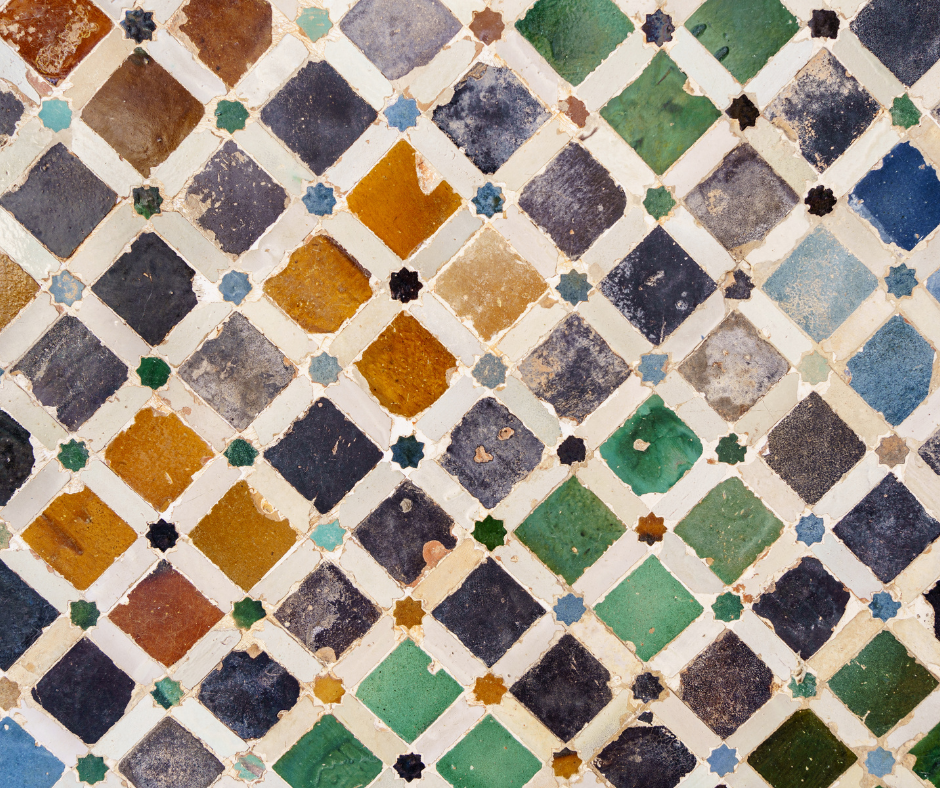
Another significant example is the Hassan II Mosque in Casablanca, Morocco, one of the largest mosques in the world. This modern marvel, completed in 1993, features extensive Zellige mosaics that adorn its interior and exterior surfaces, blending traditional craftsmanship with contemporary design. These historic monuments highlight the enduring legacy and artistic significance of Zellige tiles in both historical and modern architectural contexts.
Regional Variations
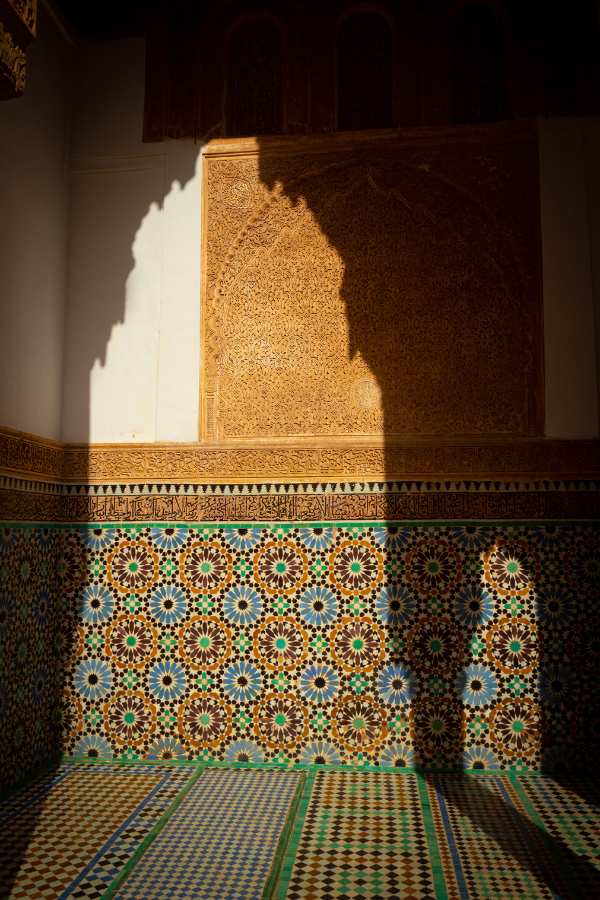
While Zellige tilework is found throughout Morocco, there are notable regional variations in style and design. For example, the city of Fez is renowned for its traditional Zellige patterns, characterized by intricate, multi-colored geometric designs that reflect the city’s rich artistic heritage. In contrast, Marrakech often features more simplified and larger geometric patterns, with a distinctive color palette that includes bold reds and earthy tones, reflecting the city’s vibrant cultural atmosphere.
Coastal regions like Rabat and Casablanca may incorporate nautical motifs and colors, such as blue and white, inspired by their proximity to the sea. These regional differences in Zellige styles demonstrate the adaptability and diverse expressions of this art form across Morocco.
Final Thoughts: Zellige Tiles Today
In recent years, there has been a revival of interest in Zellige tiles, both within Morocco and globally. Contemporary designers and architects are incorporating traditional Zellige patterns into modern interiors and exteriors, appreciating their timeless beauty and cultural significance. Efforts to preserve and promote this traditional craft have led to collaborations between artisans and designers, resulting in innovative applications of Zellige in furniture, artwork, and public installations.
This renewed appreciation not only helps sustain the traditional craft but also ensures that Zellige tiles continue to evolve and find relevance in modern design contexts. The blend of tradition and innovation in Zellige tilework exemplifies its enduring appeal and its capacity to enrich contemporary spaces with a touch of Moroccan heritage.




